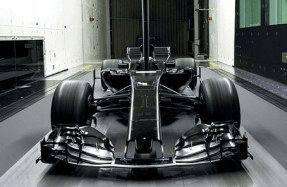Making BoP changes

In the last article on Balance of Performance (BoP) in RE V30N11 we explored two key concepts: the physics of vehicle performance, and the options available for making changes to the balance of performance.
In this article we will examine the actual process of making BoP changes. It is important to keep in mind that the challenge of balancing disparate vehicles is an engineering physics problem, and the potential solutions can usually only be drawn from the list of available parameters to change.
But how can we know if a change in performance is required, or which vehicle parameter to modify to affect this change?
Despite what many pundits may believe, the process of making BoP changes is not black magic, nor based on a random number generator, it is truly an engineering problem that follows the scientific method. It begins by asking a question and ends by forming a conclusion.
Despite what many pundits may believe, the process of making BoP changes is not black magic, nor based on a random number generator
With the BoP process, we must ask the following question prior to each event: ‘Will the expected performance of all vehicles competing at the upcoming event be balanced?’The conclusion formed following each event is either; ‘yes, the performance of all vehicles competing at the event was balanced,’ or ‘no, the performance of all vehicles competing at the event was not balanced.’ Sometimes, it might even be ‘the expected performance of all vehicles was not demonstrated, so I have no idea if the vehicles were balanced or not!’
Between these initial and final steps, the remaining phases of the scientific method are followed, which include conducting research, forming a hypothesis, performing an experiment, collecting data and analysing and reviewing that data with the objective of forming a conclusion. Once the conclusion is drawn, the final step of the process involves generating a report to communicate the findings of data analyses and provide factual evidence supporting the conclusion.
I want you to think about the experiment phase of the Balance of Performance process as a race event.
You’re reading a preview, subscribe to read more.
Start your free 30 days





